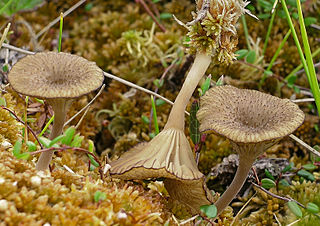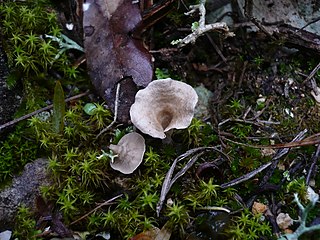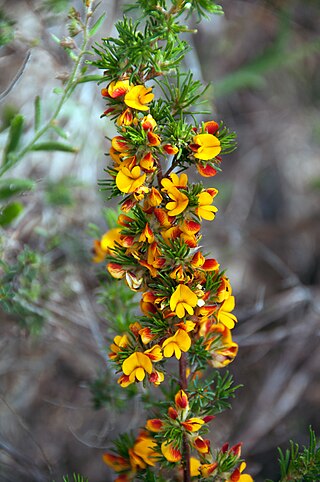
Katherine Ann Moss is a British model. Arriving towards the end of the "supermodel era", Moss rose to fame in the early 1990s as part of the heroin chic fashion trend. Her collaborations with Calvin Klein brought her to fashion icon status. She is known for her waifish figure, and role in size zero fashion. Moss has had her own clothing range, has been involved in musical projects, and is also a contributing fashion editor for British Vogue. In 2012, she came second on the Forbes top-earning models list, with estimated earnings of $9.2 million in one year. The accolades she has received for modelling include the 2013 British Fashion Awards acknowledging her contribution to fashion over 25 years, while Time named her one of the world's 100 most influential people in 2007.

Elisabeth Singleton Moss is a British-American actor and producer. She is known for her work in several television dramas, garnering many accolades, including two Primetime Emmy Awards and two Golden Globe Awards, which led Vulture to name her the "Queen of Peak TV".

Gelidiella is a genus of red algae. Worldwide there are 22 species of Gelidiella, mostly tropical and subtropical. Gelidiella and Gelidium are now both united into one order Gelidiales.

Zinnia acerosa is a low-growing perennial flowering plant native to the Southwestern United States and Northern Mexico. Common names include desert zinnia, wild zinnia, white zinnia, and spinyleaf zinnia. It is a popular landscape plant in the southwest due to its low water use and long bloom period. The flowers also serve as a food source for southwestern butterflies.

Omphalina is a genus of small agarics with white, nonamyloid, basidiospores and decurrent gills. Typically the cap has a deep central depression giving the umbrella-like to funnel-shaped cap the appearance of a belly button, or a belly with a navel. Similarly-shaped agarics are said to be omphalinoid in appearance.

Verticordia acerosa is a flowering plant in the myrtle family, Myrtaceae and is endemic to the south-west of Western Australia. It is a shrub with yellow flowers which change colour through red to almost black as they age. There are two varieties which vary in their leaf shape, their flower colour and some of the structures in the flower.

Arrhenia is a genus of fungi in the family Hygrophoraceae. Arrhenia also includes species formerly placed in the genera Leptoglossum and Phaeotellus and the lectotype species itself has an unusual growth form that would not normally be called agaricoid. All of the species grow in association with photosynthetic cryptogams such as mosses, including peat moss, and alga scums on decaying wood, and soil crusts consisting of mixes of such organisms. Typically the fruitbodies of Arrhenia species are grey to black or blackish brown, being pigmented by incrusting melanized pigments on the hyphae.

Dyssodia is a small genus of flowering plants in the family Asteraceae. Many species formerly included in Dyssodia are now treated as members of other related genera, including Thymophylla or Adenophyllum. Dyssodia papposa is usually retained in this genus. The name is derived from the Greek δυσοδια (dusodia), meaning "ill-smelling".
Dictyonema is a genus of mainly tropical basidiolichens in the family Hygrophoraceae.

Muscinupta is a fungal genus that produces small white delicate fan-shaped to cupulate fruitbodies on mosses. It is monotypic, containing the single species Muscinupta laevis. The type species is better known under the name Cyphellostereum laeve but Cyphellostereum is a basidiolichen.

Persoonia acerosa, commonly known as needle geebung, is a species of flowering plant in the family Proteaceae and is endemic to a restricted area of New South Wales. It is a shrub with small, channelled, needle-like leaves, yellow tubular flowers and yellowish-green, pear-shaped fruit.

Arrhenia spathulata is a mushroom-forming fungus in the family Hygrophoraceae. Found in Europe, it is widespread along the Atlantic coast.
Houstonia acerosa, the New Mexico bluet or needleleaf bluet, is a plant species native to Chihuahua, Coahuila, Nuevo León, Tamaulipas, San Luis Potosí, Texas and New Mexico.

Euphrosyne acerosa, commonly known as copperweed, is a species of plant in the family Asteraceae. It is native to the south-western United States.

Arrhenia chlorocyanea, commonly known as the verdigris navel, is a species of agaric fungus in the family Hygrophoraceae. Originally named as a species of Agaricus in 1885, and later classified as a member of Omphalina, the species was transferred to the genus Arrhenia in 2002. It is found in Europe and North America.

Arrhenia lobata is a species of agaric fungus in the family Hygrophoraceae. It is found in the Iberian Peninsula and central Europe, and North America. It associates with mosses and may have a parasitic relationship with them.
Arrhenia eburnea is a species of agaric fungus in the family Hygrophoraceae. Found in Spain, it was described as new to science in 2003. It has white to ivory-colored fruit bodies with decurrent gills, and a smooth stipe. Its spores are smooth, hyaline, ellipsoid to somewhat cylindrical, and measure 9–11.5 by 4.5–6.5 μm. The specific epithet eburnea, derived from the Latin eburneus, refers to the yellowish-white hues of the fruit bodies.

Darwinia acerosa, commonly known as the fine-leaved darwinia, is a plant in the myrtle family Myrtaceae and is endemic to a small area in south-west of Western Australia. It is a densely branched, heath-like shrub with crowded, finely pointed leaves and drooping heads of forty to fifty yellowish-green flowers.

Dillwynia acerosa is a species of flowering plant in the family Fabaceae and is endemic to Western Australia. It is an erect spindly shrub with hairy, needle-shaped leaves and yellow flowers.

Pultenaea acerosa, commonly known as bristly bush-pea, is a species of flowering plant in the family Fabaceae and is endemic to south-eastern continental Australia. It is a rigid, much-branched shrub with glabrous, grooved, needle-shaped leaves and yellow flowers with red veins.

















